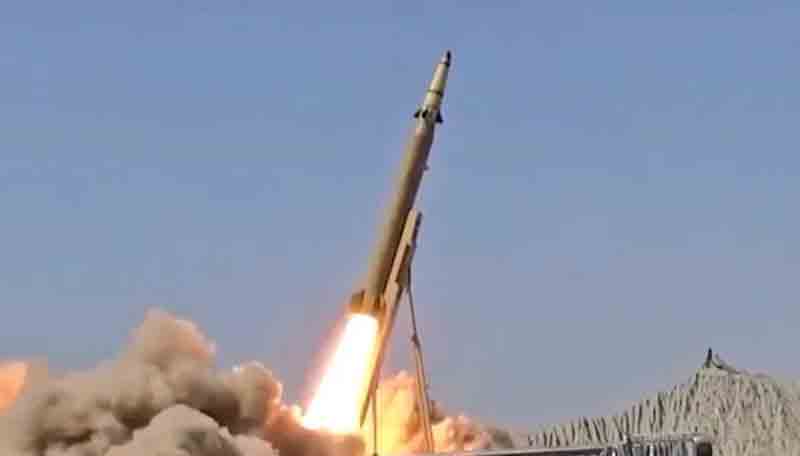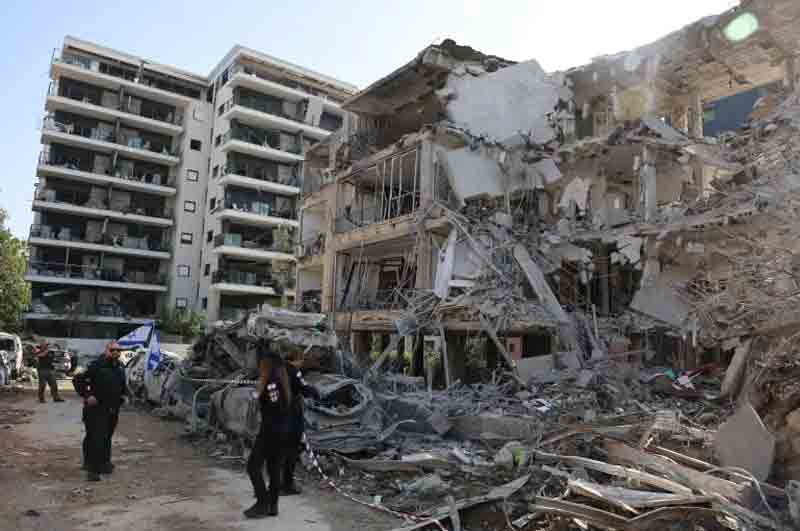In a moment of historic importance and increasing strategic instability, Iran has officially confirmed the combat deployment of its most sophisticated precision-guided ballistic missile to date, the Qassem Basir, which made its operational debut during a significant missile offensive aimed at Israeli territory over the weekend.
This unprecedented announcement, verified by the Iranian state-affiliated FARS News Agency, follows the recent public unveiling of the missile and indicates a swift shift from prototype to battlefield readiness, underscoring Iran’s aspirations to alter the military equilibrium in the Middle East.
As per Iranian sources, the Qassem Basir was launched against several strategic targets in Tel Aviv and Bat Yam, with Tehran asserting that the strikes caused substantial damage and numerous casualties. Israeli military officials have since confirmed that personnel from the Home Front Command’s elite Search and Rescue Brigade are actively working in the Bat Yam impact area, where the missile struck near Tel Aviv.
The Israeli Defence Forces (IDF) reported that the assault resulted in four deaths and over 100 injuries, while around 20 individuals are still unaccounted for, as rescue efforts escalate amid scenes of destruction. Military experts view the deployment of the Qassem Basir as a calculated escalation in Iran’s developing deterrence and counter-intervention strategy, strategically timed to assess the effectiveness of Western and Israeli missile defense systems during a time of regional turmoil.
With a stated operational range of 1,200 kilometers, the Qassem Basir utilizes a dual-stage solid-fuel propulsion system and an advanced maneuverable reentry vehicle (MaRV), allowing it to accurately target high-value installations while evading traditional interception paths.
“Iran’s deployment of the Qassem Basir signifies not merely a tactical maneuver, but conveys a strategic message—it is a missile engineered to bypass layered Western missile defense systems with remarkable reliability,” stated a senior missile warfare expert in the region.
Nonetheless, Israeli military officials challenge Tehran’s assertions, claiming that the missiles fired lacked maneuverability, which contradicts Iran’s depiction of the Qassem Basir as a nimble and evasive reentry system. The missile’s public debut last month was accompanied by state television footage that displayed live-fire tests conducted under electronic warfare scenarios, featuring visuals of precise strikes on simulated battlefield targets in challenging terrain—meant to serve as a clear illustration of its real-world combat effectiveness.
An advanced successor to the Shahid Haj Qassem missile introduced in 2020, the Qassem Basir incorporates next-generation improvements, such as electro-optical infrared terminal seekers, inertial navigation systems, and resistance to electronic interference, enabling it to function effectively in high-intensity conflict areas where GPS signals may be compromised.
Iran’s Defence Minister, General Aziz Nasirzadeh, emphasized the missile’s durability and survivability against advanced defense systems, asserting, “Qassem Basir will be impervious to the American THAAD and Patriot air defense systems, as well as the Israeli regime’s multi-layered Arrow systems.” To grasp the missile’s intended function, it is crucial to contextualize the systems it was designed to counter.
The Terminal High Altitude Area Defense (THAAD), created by the United States, is a sophisticated exo-atmospheric interceptor aimed at neutralizing medium-range ballistic threats during their terminal phase through a hit-to-kill approach.
The widely utilized Patriot missile defense system, which is also manufactured in the United States, provides protection at low to mid altitudes against tactical ballistic and cruise missiles. However, it has encountered challenges when facing newer threats that exhibit high maneuverability.
In contrast, Israel’s Arrow missile defense system, developed in collaboration with the United States, forms the foundation of its strategic air defense. The Arrow-2 and Arrow-3 interceptors are specifically designed to target long-range missiles at elevated altitudes—yet critics caution about possible weaknesses in scenarios involving saturation or deceptive strikes. The MaRV configuration of the Qassem Basir is engineered to perform non-linear trajectories and evasive maneuvers during reentry, adding a new level of complexity that greatly diminishes the chances of successful interception.
A senior defense analyst in Tehran remarked, “The missile’s agility and guidance system enable it to alter its path mid-flight, effectively making traditional interception methods outdated,” and further highlighted its resilience to “intense electronic interference during testing.”
Equipped with a 500-kilogram high-explosive warhead, the missile is designed to destroy fortified infrastructure. Its mobile launch system, often camouflaged as civilian vehicles, contributes significantly to operational stealth and enhances first-strike survivability. The modular design and solid-fuel readiness of the Qassem Basir facilitate rapid production and saturation deployment, empowering Iranian forces to potentially overwhelm even sophisticated multi-layered defense systems through sheer volume and speed.
These capabilities are thought to have been shaped by operational insights gained during Iran’s True Promise 1 and 2 missile offensives against Israeli targets in 2024, which revealed considerable flaws in detection-to-intercept timelines.
General Nasirzadeh has referred to the missile as a “strategic equalizer,” intended to shift Iran’s military strategy from a reactive stance to a proactive precision-strike approach, which can threaten adversaries deep within their defensive positions.
The missile’s name carries significant political and ideological implications. By naming it after Major General Qassem Soleimani, the former Quds Force commander who was killed in a U.S. drone strike near Baghdad in 2020, Iran is instilling a narrative of revenge, martyrdom, and resistance into the core of its most sophisticated strike system.
With Iran now showcasing a credible ability to launch precision-guided missiles specifically designed to counter systems like THAAD, Patriot, and Arrow, defense strategists in Washington, Tel Aviv, and Riyadh will need to reevaluate their existing strategies, readiness, and the vulnerability of critical assets.
While independent verification of the missile’s combat effectiveness is still limited, the strategic consequences of its deployment are clear—Iran has entered a new phase of missile warfare characterized by stealth, precision, maneuverability, and tactics focused on overwhelming force. As geopolitical tensions escalate and the threat of high-level regional conflict rises, the Qassem Basir has evolved from merely a prototype on a launch pad to a tangible battlefield reality with worldwide implications, altering the dynamics of modern deterrence and changing the nature of future conflicts in the Middle East.
Discover more from Defence Talks | Defense News Hub, Military Updates, Security Insights
Subscribe to get the latest posts sent to your email.





